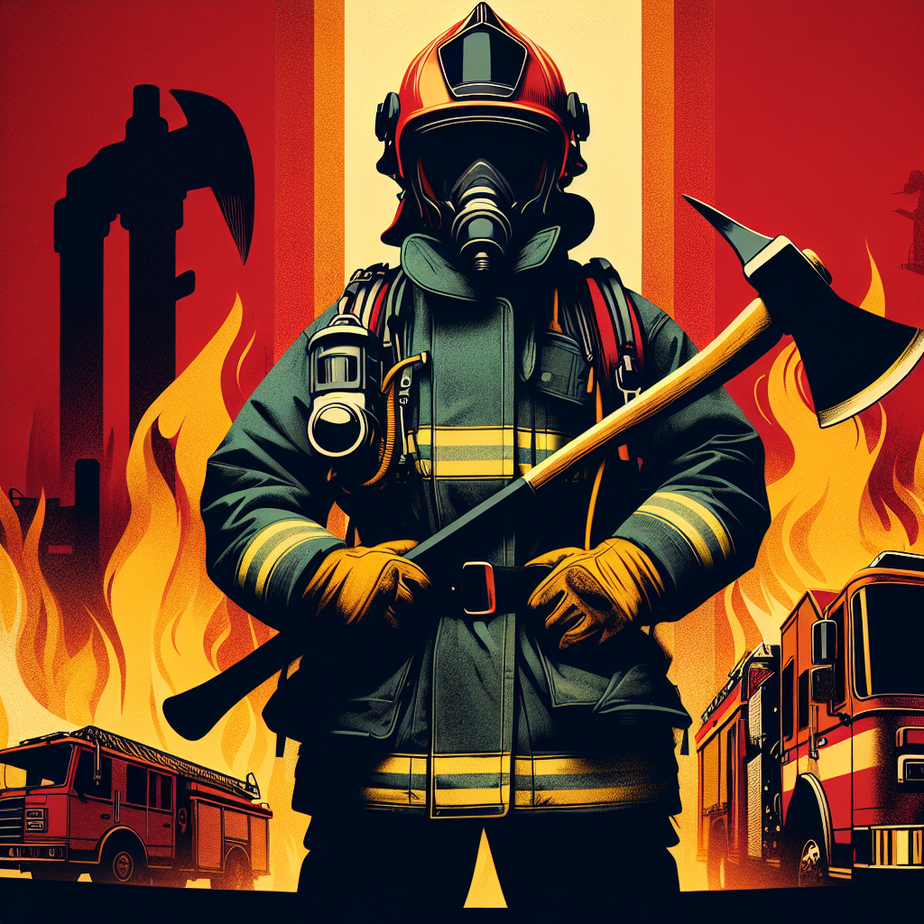🚒🔥🔥 Firefighting Isn’t for the Faint-Hearted
Imagine running headfirst into a wall of flames while everyone else is sprinting in the opposite direction. Welcome to the life of a firefighter! In Australia, where bushfires are as common as kangaroos, having the right gear isn’t just a matter of comfort—it’s the difference between survival and danger.
Firefighters rely on top-notch equipment to keep them safe and efficient. Whether battling blazes in dense forests or tackling urban infernos, their gear is their lifeline. This guide will break down the essential firefighting gear that Aussie firefighters swear by.
🏆 1. Personal Protective Equipment (PPE): The Firefighter’s Armour
Firefighting gear isn’t about looking cool (although, let’s be honest, firefighters do). It’s about staying protected in extreme heat, smoke, and unpredictable conditions.
🔥 Fire-Resistant Clothing
Fire-resistant suits, also known as turnout gear or bushfire PPE, help firefighters withstand extreme temperatures. Made from Nomex or PBI fabric, these materials won’t melt like cheap plastic sunglasses left on a car dashboard in summer.
🧤 Fire-Resistant Gloves
Try handling a searing-hot hose or breaking through a burning wall without gloves—spoiler alert: bad idea. Fire-resistant gloves provide dexterity and protection from heat.
🥾 Steel-Toed Boots
Burning debris, sharp objects, and collapsing structures—firefighters stomp through hazardous environments daily. Steel-toed, heat-resistant boots ensure they have solid footing in the chaos.
👷♂️ Fire Helmet
Would you run into a burning building without protecting your noggin? No way! Helmets shield firefighters’ heads from falling debris, extreme heat, and unexpected hazards. Plus, they come with face shields to protect from embers and smoke.
🚒 2. Breathing Apparatus: Because Smoke Isn’t a Great Air Freshener
Ever tried breathing inside a smoky kitchen after overcooking toast? Now multiply that feeling by a hundred—welcome to a fire.
🫁 Self-Contained Breathing Apparatus (SCBA)
Firefighters wear SCBAs like scuba tanks, except instead of exploring coral reefs, they venture into smoke-filled buildings. These devices provide clean oxygen and prevent firefighters from inhaling toxic fumes.
😷 Firefighter Masks
Connected to the SCBA, these masks protect firefighters from inhaling deadly gases. They also stop them from gulping down lungfuls of soot, which is never recommended.
💦 3. Firefighting Tools: When You Need to Smash, Cut, or Pry Open Stuff
Firefighters don’t just fight fires—they rescue people trapped in buildings, vehicles, and every imaginable disaster situation.
🪓 The Fire Axe
Nothing says “firefighter” like a trusty axe. This essential tool helps bust down doors, clear debris, and create escape routes (or look cool in calendar photos).
🛠 Halligan Bar
Think of this as an ultra-serious crowbar. The Halligan Bar helps force doors open, pry apart wreckage, and generally break things with controlled precision.
⛏ Chainsaws and Power Tools
Bushfires often bring down trees and obstacles, blocking access to affected areas. Chainsaws help clear paths, ensuring emergency vehicles can get through.
🧯 Fire Extinguisher
While fire hoses do the heavy lifting, sometimes a trusty fire extinguisher is all that’s needed to douse a small blaze. Quick, efficient, and handy in tight spaces, this classic tool is a must-have.
🚿 4. Fire Hoses & Water Supply: No H2O, No Heroics
No water? No firefighting. Fire hoses and water supplies are the backbone of firefighting operations.
🚒 Fire Hose
Fire hoses deliver high-pressure streams of water to drown the flames. These hoses are heavy, tough, and require serious muscle to handle.
💦 Hydrants & Water Sources
Australia’s vast landscape means city firefighters have hydrants nearby, while rural firefighters rely on water tanks, lakes, and dams. In bushfire-prone areas, helicopters even scoop water from swimming pools!
📌 Nozzles and Couplings
Firefighters don’t just blast water randomly. Nozzles help control water flow, changing spray patterns and maximizing impact. Specialized couplings allow hoses to connect quickly, saving precious seconds.
🌎 5. Communication & Safety Gear: Stay Connected, Stay Safe
Fighting fire isn’t just about strength—it’s about teamwork, coordination, and staying alert.
📡 Two-Way Radios
Radios keep firefighters in contact with their team and command center. When conditions shift, or an evacuation is needed, communication is everything.
🔦 Headlamps & Flashlights
Fires bring smoke, ash, and darkness. Firefighters rely on high-powered torches to navigate through blackened environments and locate survivors.
🚨 Personal Alert Safety System (PASS)
If a firefighter stops moving for too long, their PASS device emits a loud alarm. This helps teammates track fallen firefighters in emergencies.
📋 Thermal Imaging Cameras
Seeing through thick smoke is impossible—unless you have a thermal imaging camera. These devices detect body heat, helping rescue teams locate trapped victims.
🏆 Firefighters: Heroes in Heavy Gear
Australia’s firefighters aren’t just brave—they’re well-equipped warriors battling flames with skill and precision. Their gear is the difference between safety and peril, ensuring they can face even the fiercest infernos.
Do you have a favorite piece of firefighting equipment? Or maybe a funny story about trying to use a fire extinguisher? Share your thoughts in the comments below!
🔥 Stay safe, stay prepared, and give a nod to the heroes keeping Australia fire-free. 🚒💨



